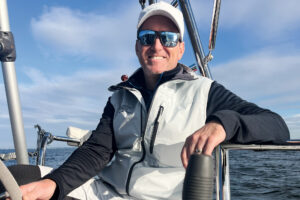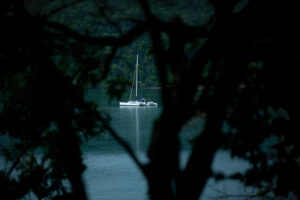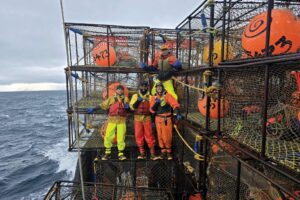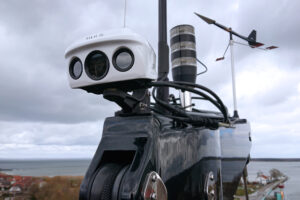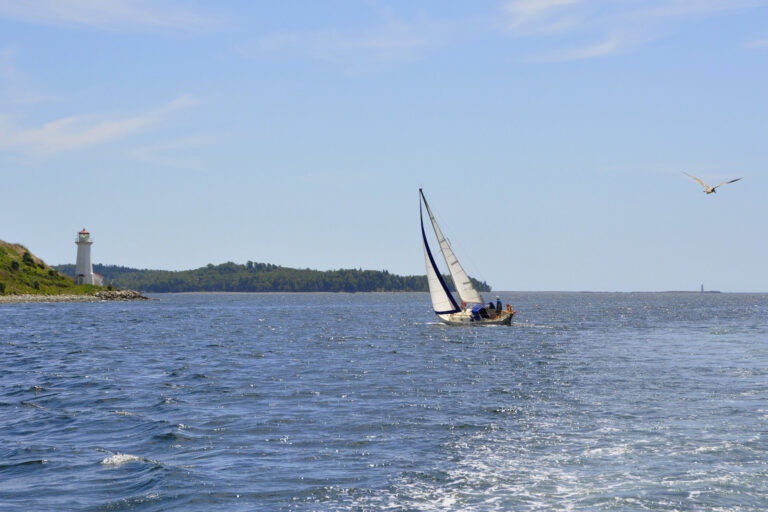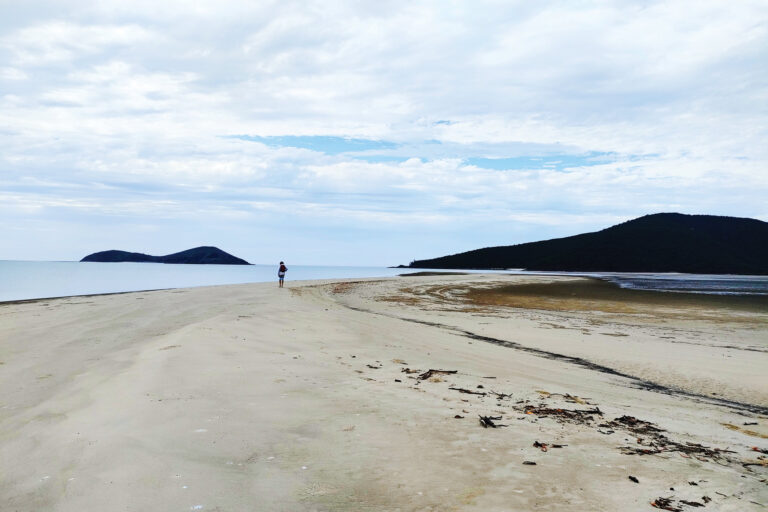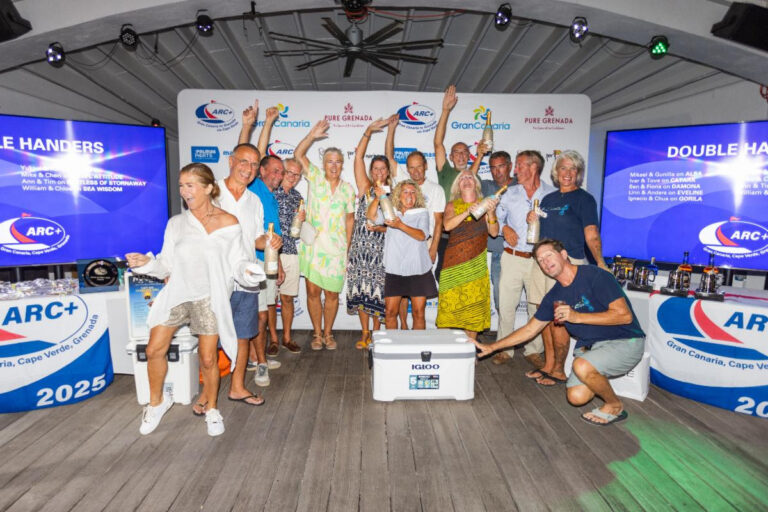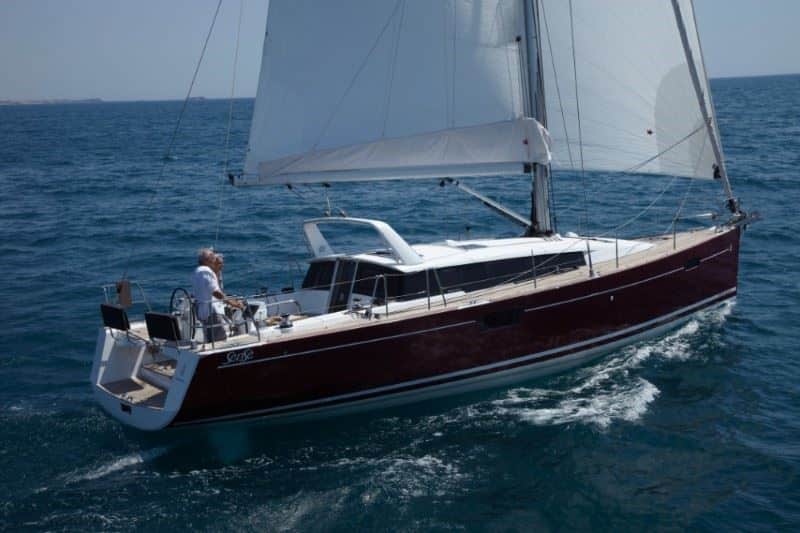
Want to create some buzz at a boat show? Show up with a very sleek 50-footer, park it in a very tight, very conspicuous place, then spin it around on a dime every couple of hours to the crowd’s cheers and applause. That’s just what French boatbuilder Beneteau did in introducing its new Sense 50 to North America during last fall’s U.S. Sailboat Show in Annapolis, Maryland (see our complete gallery here).
Wayne Burdick, the president of Beneteau USA, described the new design as “revolutionary,” and I’d agree. Many of today’s “new” models are evolutionary variations on earlier designs. The Sense 50 and its smaller sibling, the 43, which made its U.S. debut at the Miami boat show last winter, instead owe their origins to fresh thinking and a clean sheet of paper.
“The concept was how does somebody really use a boat, and what are the goals to bring that real use to a new level?” said Burdick. The idea for the Sense line dates back several years, and was first given the code name LAO, an acronym for “living aboard open.” The thought was to build a boat with plenty of room in the cockpit for entertaining and with living accommodations that aren’t buried deep in the hull, thus making the interior bright and accessible to both sailors and their non-sailing guests.
Add to that design brief the new Beneteau Dock & Go system—a software-driven bow thruster, autopilot, and rotating saildrive—and you have a boat that’s bound to get noticed. And the Sense line has. In its first year, the Sense 50 sold out its production slots; the company had expected to build and sell 40, but as of June, Burdick forecast that 70 should come off the production line in France by the end of August, the close of the company’s financial year. The 43 is tracking well, too, he added. The first hull wasn’t available until March, and more than 30 should be sold this year. The company plans to introduce a 55-foot Sense at the Paris boat show, and it will be available Stateside in 2012.
Following the Miami show, I sailed the prototype of the 43 in a fairly moderate breeze of about 10 knots, with only light chop ruffling the protected waters of Biscayne Bay. With its Seldén in-mast furling mainsail and self-tending jib set on a Facnor furler, we scooted along at 5 knots. The boat’s twin helms, driving paired rudders, felt smooth, and we tacked nimbly through 100 degrees. Cracked off to a reach, we gained another knot, and we picked up still more speed—to just over 7 knots—when we rolled out the code zero.
Designed by naval architects Berret Racoupeau, the Sense “look” includes a hard chine that runs along the aft third of the boat, just above the waterline. This, plus considerable beam that’s carried all the way aft, helps minimize the angle of heel while under way. These boats, says Burdick, are intended to be quick, easy to handle, and sail fairly flat.
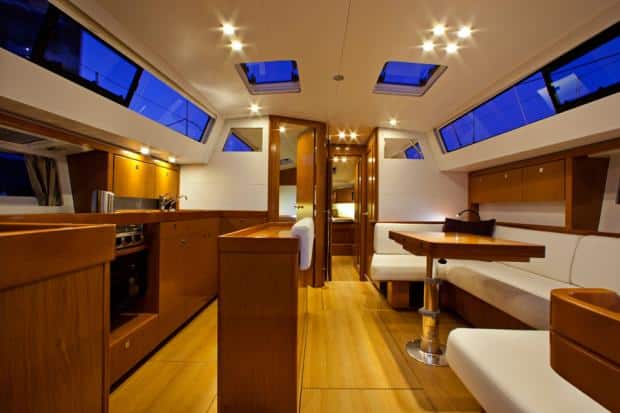
Topside, the deck and cockpit layouts are clean. You step aboard across the boat’s open transom and past its dual helms, each with a gas shock-assisted seat that folds up and out of the way when in port. Large cockpit lockers provide ample storage for gear and toys, and there’s a dedicated life-raft locker between the wheels. A teak cockpit table sits amidships between comfortable seats that are more than long enough for a 6-footer to stretch out on.
Sheets for the code zero run to Harken Radial winches mounted just forward of each helm; other sail-control lines are led to clutches and electric Harken Radials on the cockpit coamings, near the cabin. Lockers in the coamings keep the tails out of sight.
To accommodate the Nauta-designed interior (which is only three steps lower than the cockpit), the cabin top is higher than on most boats, but I found that there was still good visibility from either helm and that being able to peer ahead and into the saloon through both the companionway and the aft-facing windows, as you might on a catamaran, has its advantages. An arch sits atop the aft end of the cabin and anchors the mainsheet; the forward edge of the coach top is wedge shaped and joins the deck well forward of the mast.
The layout below is open and light, thanks to the fact that even when you’re seated at the table, which is to starboard in the saloon, you can easily see out the ports, as you might in a deck-saloon design. An amidships island provides additional seating and a convenient place to hide a drop-down flat-screen television. A galley with all the expected gear and plenty of storage space is located to port at the foot of the companionway.
Forward of the saloon, a head with separate shower is to starboard and opposite a cabin with a double Pullman berth. The owner’s cabin is all the way forward and has two hanging lockers flanking a very luxurious queen-size berth.
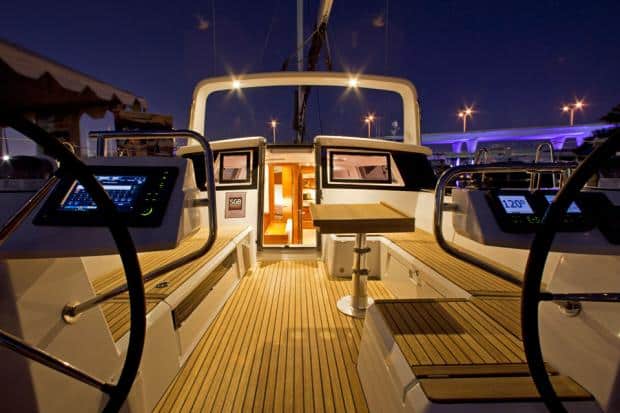
The 43 I sailed had a conventional 54-horsepower Yanmar engine and saildrive; at that time, the Dock & Go system was only available with the larger 75-horsepower Yanmar employed on the Sense 50, but the system is now available as an option on the 43. Motoring, our speed hovered around 7.5 knots at 2,400 rpm; we gained another knot or so wide open at 3,000 rpm. Backing, I found the boat a little sluggish turning to starboard, but the Dock & Go will address that. My one quibble was that the panel to check engine fluids, stationed in the starboard cockpit locker, wasn’t easily accessible, a small complaint given the many good points that the 43 brings to the dock.
Sitting below while others did the sailing, I found the motion pleasant, the cabin airy, and the view spectacular. At a time when builders are eager to coax newcomers aboard, I couldn’t help but think that the Sense 43 makes a very good first impression.
LOA: 43′ 4″ (13.20 m.)
LWL: 42′ 0″ (12.80 m.)
Beam: 14′ 1″ (4.28 m.)
Draft (deep): 6′ 7″ (2.0 m.)
(shoal): 5′ 5″ (1.65 m.)
Sail Area (100%): 847 sq. ft. (78.7 sq. m.)
Ballast (deep): 5,841 lb. (2,650 kg.)
(shoal): 6,436 lb. (2,920 kg.)
Displacement: 22,194 lb. (10,070 kg.)
Ballast/D (deep): .16
(shoal): .18
D/L: 135
SA/D: 17.2
Water: 178 gal. (675 l.)
Fuel: 116 gal. (40 l.)
Holding: 21 gal. (80 l.)
Mast Height: 61′ 11″ (18.88 m.)
Engine: 54-horsepower Yanmar/saildrive
Designer: Berret Racoupeau/Nauta Design
Price: $300,000
Beneteau
(843) 629-5300
To read more Cruising World reviews of Beneteau sailboats, click here. To visit Beneteau America’s website, click here.

